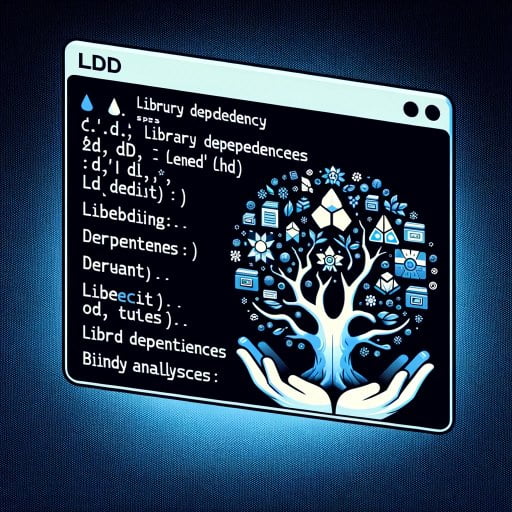When it comes to modern software development, one term that frequently pops up is library dependencies. Whether you’re a beginner programmer or a seasoned developer, understanding library dependencies is crucial for building efficient, scalable, and error-free applications. In this article, we will explore what library dependencies are, their significance, how to manage them, and why they are essential for your APK projects. Let’s dive into the world of dependencies to uncover their pivotal role in app development.
What Are Library Dependencies?
At its core, a library dependency refers to an external piece of code or a package that your project relies on to function correctly. Libraries provide pre-written code that developers can use to perform specific tasks, such as handling user input, managing databases, or rendering graphical elements.
For example, if you are building an APK application that needs to interact with a database, you might use a library like SQLite or Room. These libraries reduce the need to write repetitive boilerplate code, enabling you to focus on the unique aspects of your project.
Key Characteristics of Library Dependencies:
- Reusable Code: simplifies development by offering pre-built solutions.
- Modularity: Helps organize your code by separating functionalities into distinct libraries.
- Efficiency: Saves time and resources by avoiding reinventing the wheel.
Importance of Library Dependencies in APK Development
APK development in particular thrives on the use of libraries and frameworks. Here’s why library dependencies are essential for APK projects:
- Speeds Up Development Using libraries enables developers to swiftly incorporate intricate features without necessitating the creation of new code. For instance, libraries like Glide or Picasso simplify image loading, while Retrofit streamlines API communication.
- Ensures Consistency Libraries are maintained by communities or organizations, ensuring they remain up-to-date with best practices and bug fixes. This consistency can lead to more stable applications.
- Improves Collaboration When teams use standard libraries, it becomes easier for developers to work on the same project without miscommunication.
- Enhances Scalability Libraries help maintain clean and modular codebases, making it easier to scale applications as they grow.
Types of Library Dependencies
There are various types of library dependencies you may encounter:
1. Static Libraries
These libraries are directly embedded into your project during the build process, increasing the final application size. Examples include .lib or .a files.
2. Dynamic Libraries
These libraries are linked at runtime, reducing the size of your APK. Examples include .dll or .so files.
3. Third-Party Libraries
Popular libraries like Dagger, RxJava, and Firebase are examples of third-party dependencies that offer pre-built functionalities.
4. Native Libraries
Libraries that are written in C or C++ and are accessed via JNI (Java Native Interface) in Android apps.
Common Challenges with Library Dependencies
While library dependencies bring many benefits, they also pose some challenges.
- Version Conflicts Using multiple libraries that depend on different versions of the same dependency can cause conflicts. Tools like Gradle in Android help resolve these issues.
- Security Risks Outdated libraries may have vulnerabilities that expose your app to security threats. Regularly update your dependencies to mitigate risks.
- Increased Build Size Overusing dependencies can bloat your application, leading to larger APK sizes.
- Compatibility Issues Some libraries may not be compatible with the latest Android versions or specific device architectures.
Best Practices for Managing Library Dependencies
To make the most out of your dependencies, follow these best practices:
- Use dependency management tools like Gradle (Android) or Maven (Java) to make it easy to manage and resolve dependencies in your project.
- Regularly Update Libraries Ensure all libraries are up-to-date to benefit from the latest features and security patches.
- Avoid Overloading Dependencies Only include the libraries you need. Unnecessary dependencies can slow down your app and make debugging harder.
- Check Licenses Some libraries have licensing restrictions. Ensure the libraries you use comply with your project’s requirements.
- Monitor Security Vulnerabilities Use tools like Snyk or GitHub’s Dependabot to identify and fix vulnerabilities in your dependencies.
FAQs About Library Dependencies
1. What are library dependencies in Android Studio?
Library dependencies in Android Studio refer to external libraries added to your project to extend its functionality. These are usually managed through Gradle.
2. How do I add a library dependency in Android Studio?
You can add dependencies by modifying the build.gradle file. For example:
implementation 'com.squareup.retrofit2:retrofit:2.9.0'3. What is the difference between compile and implementation in Gradle?
compile: Deprecated. It was used to include dependencies in the compile classpath and runtime.implementation: Includes dependencies in the runtime classpath but keeps the compile classpath cleaner.
4. How do I resolve dependency conflicts in Android Studio?
Use Gradle’s dependency resolution strategies or tools like “./gradlew dependencies” to identify conflicts.
5. Can I create my own library dependency?
Yes! You can package your reusable code as an Android library and publish it locally or on platforms like JitPack or Maven Central.
Tools for Managing Library Dependencies
1. Gradle
Gradle is the default build system for Android projects and is highly efficient for managing dependencies.
2. Maven
Maven is widely used in Java projects and offers robust dependency management features.
3. Ivy
Apache Ivy is a dependency management tool often used in conjunction with Ant.
4. npm
While primarily for JavaScript, npm is another excellent example of dependency management in software projects.
Conclusion
Understanding and managing library dependencies is a fundamental aspect of modern APK development. By leveraging the power of pre-built libraries, you can accelerate your development process, enhance app functionality, and maintain clean, efficient code. However, always ensure you follow best practices to avoid potential pitfalls like version conflicts and security vulnerabilities.
Choosing and managing dependencies wisely is crucial for the success of your project. By mastering library dependencies, you’re setting your APK projects up for success in the competitive world of app development.







